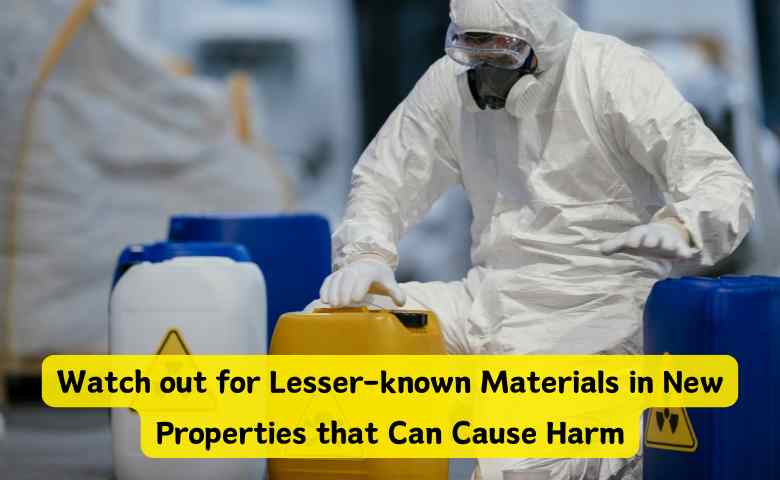Last Updated on January 10, 2025 by Admin
When it comes to developing new properties, it’s easy to focus on the shiny new features and designs, but there are some hidden dangers that can creep in when constructing or renovating buildings, especially when it comes to materials that might not seem dangerous at first but can cause harm over time. While some hazardous materials like asbestos and lead get a lot of attention, there are a few lesser-known culprits that could sneak into your new construction project without you even realizing it.
Table of Contents
Polychlorinated Biphenyls (PCBs)
PCBs might not be a household name, but they’re lurking in places you wouldn’t think to look. You might find them hanging out in older electrical equipment, light fixtures, and even in caulking materials used in some construction projects. The interesting fact is that they don’t cause immediate harm, so you won’t notice anything off right away; but over time, PCBs can accumulate in both the environment and your body. Long-term exposure can do harm to your liver and even increase your risk of cancer. It’s something you definitely don’t want to overlook when working with older buildings or redoing electrical systems, especially if there are still traces of old equipment in play.
Phthalates
You’ve probably heard of plasticizers like phthalates, but unless you’re in construction, you might not realize how much of a presence they have in building materials. Phthalates are often used in things like vinyl flooring, adhesives, and paints, and while they don’t cause a huge ruckus upfront, these chemicals can build up over time. They don’t just stick around in the air; they accumulate in the body, too. Over the long haul, they’ve been linked to hormonal disruptions that can lead to serious reproductive health issues, particularly in kids. This might sound like something you don’t need to worry about, but when you factor in that construction often involves cramped spaces and poor ventilation, those phthalates can really linger, and make the air unhealthy and potentially affecting everyone who spends time in the building.
Trichloroethylene (TCE)
Breathing in TCE fumes in confined spaces can cause imbalance when it comes to your nervous system, and prolonged exposure can even damage your liver or increase the chances of developing cancer. For many businesses, contractors, and homeowners, it’s easy to forget about the solvents in the paints and finishes they’re using, but long-term exposure in poorly ventilated areas could have real consequences down the road. This is one of those silent problems that builds up gradually without you even realizing it until it’s too late, and for a material that’s so commonly used, it’s crucial to make sure you’re ventilating spaces properly and using safer alternatives when possible.
The Solution—Toxic Cleanup Pros
Certain construction materials can be more than just a nuisance—they can actually be dangerous, not just to you but to your workers and future tenants too. That’s where toxic cleanup professionals come in—they know exactly how to handle hazardous materials like mold, asbestos, or chemical residue, and can make sure your site is clear of anything that could cause harm before the real work even begins. These experts come with the right tools, know-how, and safety gear to tackle these risks head-on, so that your project doesn’t get bogged down by delays, expensive cleanup costs, or legal issues down the line. Getting professionals on board means you can move forward with peace of mind, and know that the space you’re building will be safe for everyone involved.
If you’re starting a new project, make sure to keep an eye on these potential dangers—your future self (and your future tenants or workers) will thank you.
Related Posts
- The Top 10 Reasons Your Business Needs a Health and Safety Consultant
- What’s the Difference Between Rigid and Flexible PCB
- Efficient Practices and Tools for Safe Construction Projects


